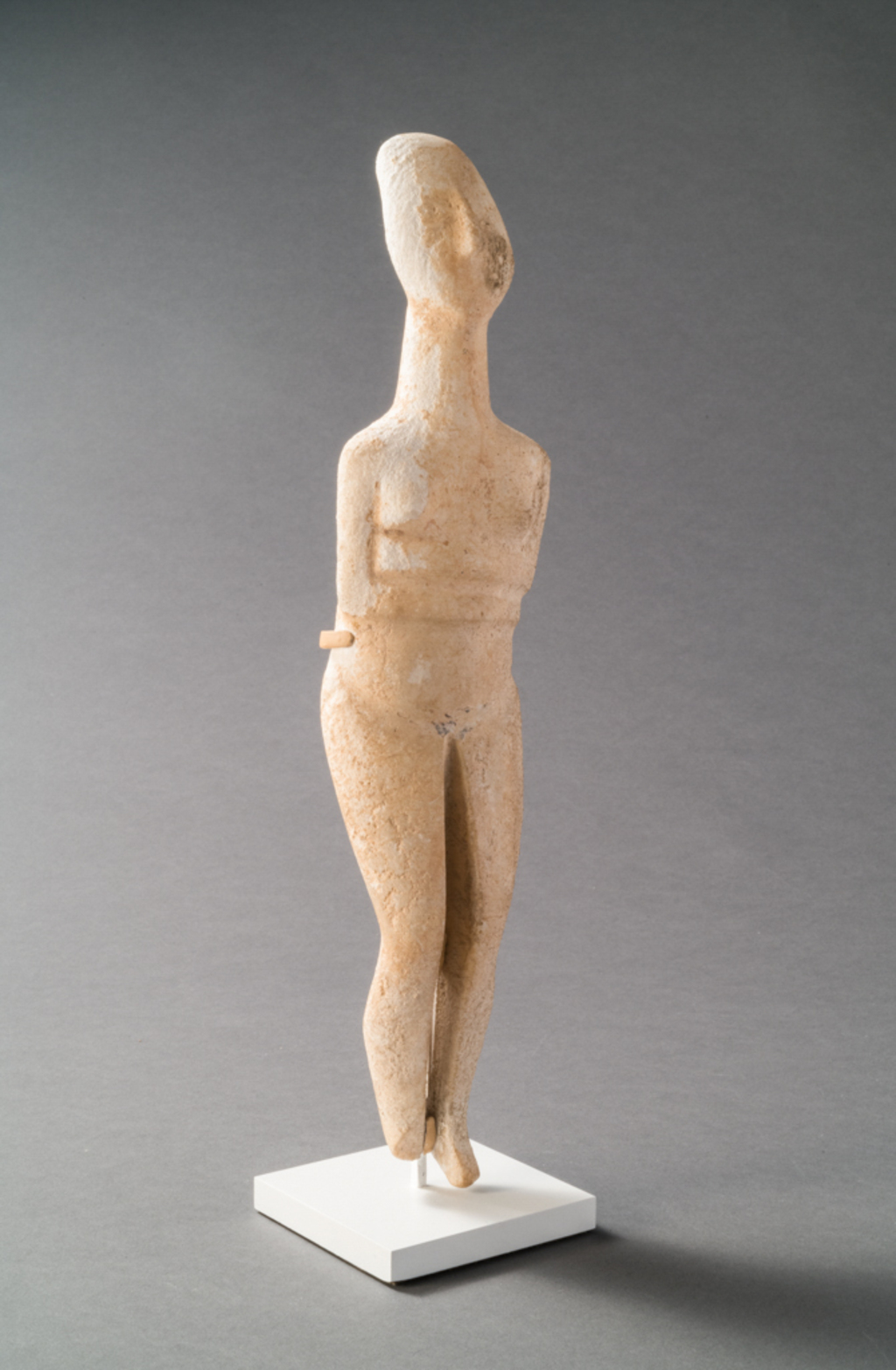Sometimes called Folded Arm Figures (FAF), or more simply Cycladic figures, marble sculptures primarily of women are known from across the Cycladic islands in the early Bronze Age. Dating to the Early Cycladic II period (around 2600–2400 BCE), this female figure belongs to a group of Cycladic sculptures known as the Kapsala type, with additional features of the Spedos type. Both of these styles were produced during the same period, although the Spedos type later replaced the Kapsala in popularity. Kapsala figures have more modeled features on the body and fewer incised details. Typically, the head is small and ovoid, but on this figure the U-shaped head is similar to those of the Spedos type.
Due to a lack of contemporary written texts and the deficiency of archaeological provenience for the majority of these figures, their exact function is unknown. Examples have been found in funerary, domestic, and votive contexts, possibly suggesting that the figures were multifunctional. Some may have had additional decoration with pigments, now largely lost.

